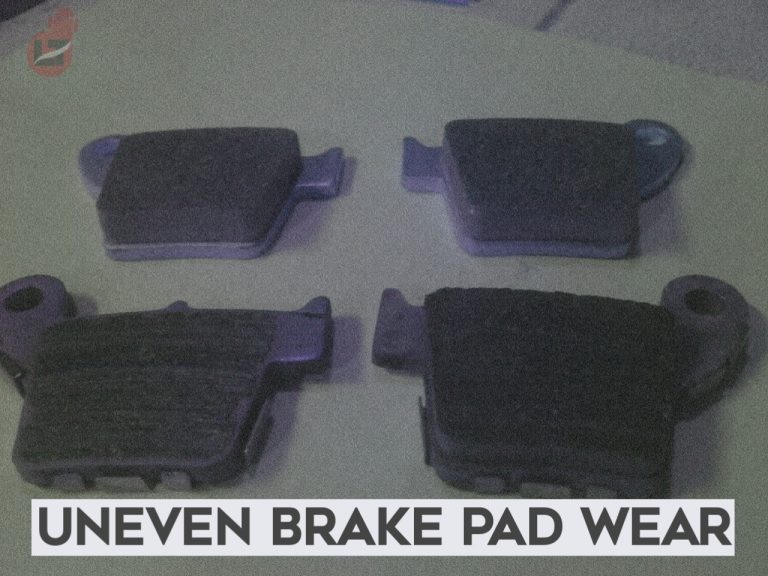This article will explain the meaning of uneven brake pads and explore the possible reasons behind this issue.
The brake system is a crucial component of any vehicle, as it ensures the safety of the driver and other road users. Therefore, it is essential to maintain the braking system to ensure it functions correctly.
The brake system is composed of several parts that must be well-maintained. Brake pads fit inside the brake calipers and grip the rotors, generating friction and providing stopping power.
As a perishable component, brake pads and other braking system parts wear out over time and require replacement. Therefore, monitoring the amount of brake pad material remaining is crucial to ensure safety while driving.
Various factors can cause uneven brake pad wear, including driving style, quality, rotor condition, and brake caliper function.
Several indicators can suggest that brake pads are approaching the end of their service life or wearing unevenly. Reduced braking efficiency, squeaking sounds when applying the brakes, and vibration under the braking components are common signs of uneven brake pads.
What Does It Means
Uneven brake pads are characterized by uneven wear on the sides of the brake pad. This is usually caused by caliper failure. The caliper contains a piston that applies pressure to the brake pads, allowing the vehicle to come to a stop. When the driver releases the brake pedal, a seal inside the caliper pulls the piston away from the pad.
Uneven brake pads are commonly caused by Disc Thickness Variation (DTV). DTV occurs when there is a difference in the thickness of the brake discs. This difference in thickness causes the brake pads to wear unevenly over time.
Causes Of Brake Pad Uneven
1. Caliper Failure
Caliper failure is a leading cause of uneven brake pad wear. If your car’s brake pads are wearing unevenly, it is likely due to caliper failure. Brake pads are designed to wear down evenly to provide consistent braking pressure for the driver.
Uneven pad wear can occur if there is any metal-on-metal contact in the brake system. Fortunately, with proper maintenance, this issue can be avoided.
2. Misalignment
Uneven brake pad wear often indicates that your car is out of alignment. Misalignment is a common cause of this issue, which can lead to various problems.
Misalignment is designed to make the front wheels pull to one side or the other when braking, resulting in uneven wear on the brake pads. This occurs because if one tire wears faster than the other, your vehicle may not be able to turn correctly, leading to more friction on one side of your brakes. This can cause a squealing noise and an unbalanced feel while driving.
3. Slide Pins
Slide pins are essential to your braking system that keeps your brakes and wheels connected. However, they can become eroded over time, preventing the caliper from moving back and forth with each revolution of the tires on the rims. This can lead to a decrease in stopping power, and if it lasts for too long, it can cause the brake pads to wear down excessively.
To address this issue, it is recommended to use a wire brush or rag to clean the affected area before applying grease. However, care should be taken not to overspray any important places where rust may begin to build again.
4. Sticky Caliper Pistons
Uneven brake pad wear is often caused by a caliper issue, which can result from debris or rust entering any pistons. When a piston fails to slide smoothly, the brake pad becomes stuck to the rotor, and it is typical for a jammed caliper to wear down the brake pads.
If a caliper fails to engage, it may be due to pressure not being applied or released correctly. Additionally, a piston being ejected but refusing to return can be caused by a bad seal or piston or corrosion on the piston binding against the internal cylinder.
To fix the issue, you can hone the cylinder, clean or replace the piston, and replace the seal, known as rebuilding the caliper. This is an easy and inexpensive method to fix uneven brake wear on your car. However, if you don’t have the proper equipment or knowledge, it’s best to take it to a mechanic for help.
As an Amazon Service LLC Program Associate, V. Auto Basics earns from qualifying purchases. See Our Affiliate disclaimer.
